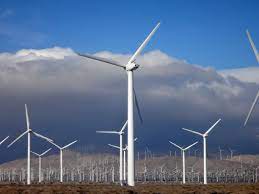I was all set this week to plunge into the details of the Green New Deal so I could see what new impositions the climate-alarmist politicians have in store for us. Then I made a startling discovery. (Startling for me, that is. I’m behind the news curve.)
The Green New Deal isn’t real. By that, I mean no bill in Congress sets out a list of specific government actions thought to be necessary to save the planet from carbon dioxide, heat waves, cold snaps, rising sea levels, ocean acidification, desertification, extinction, more rain and floods, more droughts, more trees, fewer tress, or whatever the latest existential threat de jour is. I wondered why we hear all the talk about a Green New Deal if that’s the case.
According to Reuters, last April two of the usual suspects, Sen. Ed Markey and Rep. Alexandria Ocasio-Cortez again introduced “their set of aggressive climate goals intended to transform the U.S. economy. Initially introduced in 2019, the non-binding resolution seeks to eliminate U.S. greenhouse gas emissions within a decade and transition the economy away from fossil fuels.”
It’s not a bill at all, but two nonbinding resolutions (H.Res. 332, in the House and S.Res. 166 in the Senate. Bills get a B) that list goals. That’s it.
I found confirmation from a disappointed Robinson Meyer, who wrote in the Atlantic, “With so much ballyhoo, it’s become easy to miss the central, implacable fact about the Green New Deal: It does not exist…. Three years after the idea of a Green New Deal broke into the mainstream, you can’t find an authoritative and detailed list of Green New Deal policies anywhere. There is no handbook, no draft legislation, no official report that articulates what belongs in a Green New Deal and what doesn’t.”
NPR elaborated in 2019:
In very broad strokes, the Green New Deal legislation [sic] laid out by Ocasio-Cortez and Markey sets goals for some drastic measures to cut carbon emissions across the economy, from electricity generation to transportation to agriculture. In the process, it aims to create jobs and boost the economy. [Emphasis added.]
In that vein, the proposal stresses that it aims to meet its ambitious goals while paying special attention to groups like the poor, disabled and minority communities that might be disproportionately affected by massive economic transitions like those the Green New Deal calls for.
Importantly, it’s a nonbinding resolution, meaning that even if it were to pass…, it wouldn’t itself create any new programs. Instead, it would potentially affirm the sense of the House that these things should be done in the coming years.
In a way, that’s quite a relief. If all our misrepresentatives and public self-servants promise to do issue sense-of-the-Congress resolutions about this, that, and the other, then I say, leave them to it. They can declare that the tide goes out at a particular time, for all I care as long at they don’t do anything.
But the politicians see it another way. They want to do something, and while nothing they could do would actually achieve their bizarre goals, they would do irreparable harm to life, liberty, and the pursuit of happiness in the process. Even less ambitious programs, such as (arguably) President Biden’s, will be all cost and no benefit. Nevertheless, Green New Deal champions like Ocasio-Cortez think Biden’s “green”-infused so-called infrastructure plan is “not enough.” In April, she said Biden should spend more than twice the $3 trillion-$-4 trillion he initially called for. (Because of resistance in his own party, his spending plans seem to have been revised slightly downward, but things also seem rather fluid.)
Green New Dealers particularly like Biden’s January executive order calling for, among many other things, a strategy to create a Civilian Climate Corps, which echoes Franklin Roosevelt’s 1930s Civilian Conservation Corps. The new CCC would “mobilize the next generation of conservation and resilience workers and maximize the creation of accessible training opportunities and good jobs. The initiative shall aim to conserve and restore public lands and waters, bolster community resilience, increase reforestation, increase carbon sequestration in the agricultural sector, protect biodiversity, improve access to recreation, and address the changing climate.”
I don’t know about you, but I am nervous when I hear the government talk about mobilizing workers. I just don’t like the ring of that. I am also wary about Biden’s goal to “place the climate crisis at the forefront of this Nation’s foreign policy and national security planning.” That sounds like the U.S. government telling the poor of the developing world to be satisfied with their lot in life. If people there aspire to an American living standard, Biden could tell them not to worry because he’ll be doing his best to lower that living standard through severe restrictions on the use of hydrocarbons. That’s one way to achieve global equality. Meanwhile, the American taxpayers will be forced to bribe developing-world rulers to go along with policies that will kill the people who already suffer under them.
So what are the goals of the Green New Deal? How much time do you have? It contains everything including the kitchen sink. Yes, there’s the expected stuff: it sets the goals of “global reductions in greenhouse gas emissions from human sources of 40 to 60 percent from 2010 levels by 2030; and net-zero global emissions by 2050.” This would badly harm everyone, particularly the poorest Americans, because of the devastation it would wreak on our ability to produce goods that make our lives better. Wind and solar can’t cut it. For the developing world, it would approach genocidal.
The authors are blind to the fact that fossil fuels are indispensable to human flourishing and that CO2 is plant food; indeed, it is essential for all life. And even if such a reduction were desirable and could be achieved (it couldn’t be), it would reduce the average temperature by a negligible amount. Let’s remember, the only way to protect against actual dangers from nature, as the human race has repeatedly demonstrated, is to get richer quickly. Innovation and adaptation require wealth and free exchange, so the government should get out of the way of wealth creation and the free-exchange system.
But the Green New Deal promises so much more than green-ness, including combatting systemic racism, reversing income inequality, providing “free” health care and college, and strengthening labor unions. There’s something for everyone…well, except for most people. So-called renewable energy would doom us to costly and undependable substitutes, like wind and solar.
What’s this all going to cost? The official estimate is: Who cares? (Okay, I made that part up.)
Bear in mind that the premise of the Green New Deal and Biden’s version of it, as expressed in his executive order, is that “we face a climate crisis that threatens our people and communities, public health and economy, and, starkly, our ability to live on planet Earth.”
It takes a herculean effort and a good set of blinders to ignore the mountains of evidence against that assertion and the voluminous demolition of the alarmists’ cooked-up GIGO computer-modeled case, which has time after time proven itself to be wrong. Modern alarmists have been predicting the world’s end for 60 years. Why does anyone still take them seriously?
But, then, the Green New Deal isn’t really about climate at all, is it? It’s just a long-standing interventionist wish list with a deceptive green tint. As Ocasio-Cortez’s former chief of staff Saikat Chakrabarti told the Washington Post, “The interesting thing about the Green New Deal is it wasn’t originally a climate thing at all. Do you guys think of it as a climate thing? Because we really think of it as a how-do-you-change-the-entire-
Not that this should surprise anyone.
































